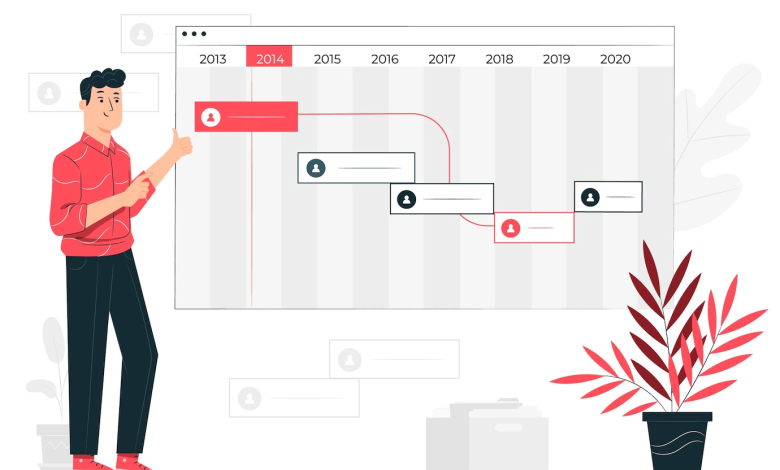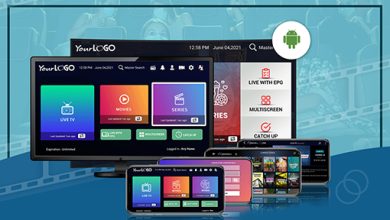How to Stay Organized and Manage Your Time With a Social Media Planner

Introduction
If you’re like the majority of small business owners, you want to give your clients the greatest experience possible. This can mean a lot of different things, including providing exceptional customer service and being available when they need something. But what if that wasn’t enough? How do you stay organized? Like many businesses, ours is built on social media in some capacity and it’s important to be organized with a social media planner so we can focus on our core mission of helping people grow their businesses online.
What you need to know before you hire a Social Media Marketing Agency
What is a social media planner?
A social media planner is a tool that helps you stay organized and manage your time. It helps you track the success of your social media campaigns, plan content for your posts, and more.
This program allows users to create custom schedules with pre-made tasks such as scheduling posts and managing their accounts from one location. It also allows users who need help managing their accounts or needs assistance in planning posts on specific days to get prompts from their dashboard when they are ready to start working on something else instead of having everything cluttered all over the place as it would be if there wasn’t any organization at all!
Social Media Aggregation: An Advantageous Marketing Strategy
Why use a social media planner?
- Organize your content. The first step in using a social media planner is to organize all of your content so that it’s easy for you to find things later on. If you have multiple accounts or pages, this can be difficult without an organizer. A good organizer will also make sure that the information is easily shared with others who are looking for something specific from you as well-known brands have thousands upon thousands of followers on various platforms and there is no way for them all to know where everything is located (unless they know how). It’s important that we stay organized so we don’t waste time searching through piles of files when we want something specific!
- Save time by staying on track with what matters most. There are many ways people end up spending too much time working on projects they don’t need anymore even though those tasks were originally meant only as temporary solutions until another project came along which took priority over them but now both projects became obsolete without any plan whatsoever because someone forgot about them altogether.
The Importance of Scheduling Content on Social Media
Create a plan
Before you start, it’s important to create a plan. A social media planner can help you develop one that includes all of your goals and objectives for each platform. The number of hours per week or month you wish to spend on each platform should also be taken into account.
Creating a template is an easy way for us to make sure we’re staying organized! Here’s what it looks like:
- Date range – This is the time period over which your posts will be made.
- Goals – What are some things we’d like our audience members to accomplish? For example, sharing more often or liking more photos/videos/articles, etc.
- Objectives – How do we want these objectives accomplished? For example: increase followership by 5% increase the engagement level by 10% etc.
Why is Social media important for business ?
Set a budget and schedule
The first step is to set a budget and schedule. You need to know how much time you have and how much money you can spend on your business so that as the business grows, it doesn’t grow out of control. The best way I’ve found for doing this is by creating an Excel spreadsheet with columns for each social media platform. In each column I list the following:
- Cost per post/video – How much does it cost me to post an item? This may include things like text editing services or graphic design work done on my end. It also includes other costs such as server storage space or hosting fees if needed in order for me not to have access at all times due
Social media manager: how to become the professional that brands want!
Conduct a competitive analysis
Conducting a competitive analysis is one of the best ways to understand how your competition operates and what they’re doing that you can’t do. For example, if a company is using an online calendar tool for sales reps, you might want to consider switching over too because it helps increase collaboration and productivity.
If there’s something that’s working well in your industry, it’s worth researching how other companies use similar tools/services/software, etc so you know where you stand compared with them and how they measure up against each other!
Create buyer personas and research keywords
When you’re working with a social media planner, the first step is to define your goals. What do you want to accomplish? Are you looking for more followers or engagement on your social media accounts? Are there certain keywords that keep popping up in searches related to fitness and health? The answers to these questions will help determine what kind of content will be most helpful for achieving those goals.
Design your content calendar
Creating a content calendar is the first step in staying organized and managing your time.
- Create a calendar for each platform you plan to use, including Facebook, Instagram, and Twitter.
- Schedule posts in advance so that you can be sure of when they’ll go live. For example, if you have an event coming up (like a vacation), schedule it as soon as possible so that people know about it beforehand!
- Plan for holidays, vacations, and other events that may cause changes in how often you post on social media sites like Facebook or Twitter. This will help keep everything running smoothly without having any issues during those times when everyone might be away from home anyway!
Planning your content marketing may keep you organized and help you manage your time.
- It helps you keep track of all the projects in your social media calendar so that you don’t have to worry about remembering when events are happening or if they’re still on track. You can also see what’s coming up next in order to figure out when it would be best for each project to post something new on its own timeline. This will allow for more consistency between posts, which will help build trust among your audience members who may not know that there is a new release every single month!
- When someone asks me how I stay so productive with my content marketing strategy (which happens more often than not), one thing I always tell them is “keeps me on track.” In other words, having an organized way of tracking everything helps me avoid falling behind schedule while still allowing me plenty of time during the weekdays since most days end around 5 pm or 6 pm depending upon whether work has been finished earlier than expected due time spent commuting home from work.”
Make a personalized social media planner to organize and manage your time.
- Use a social media planner to help you manage all of your daily activities, including posting content on the different platforms on which you have accounts.
- Create a content calendar that organizes all of your posts by day, week, month, and year so that it’s easy for everyone involved in writing/editing content (including yourself) to know when they need to post their next blog post or video.
- Determine buyer personas for each major platform so that when developing an editorial calendar for each network (Facebook Ads Manager vs Instagram Ads Manager vs Pinterest Board Manager), there are specific targets based on those personas instead of just general demographics such as age range or gender identity.
Conclusion
Social media planning is an important step for any business owner to take if they want to stay organized, manage their time, and be able to effectively promote their brand. It’s not just about having a plan it’s about making sure that all of your social media efforts are aligned with those goals. A social media planner can help with all these things by keeping track of what needs to be done and when and providing resources for how content creation should look on each platform.




